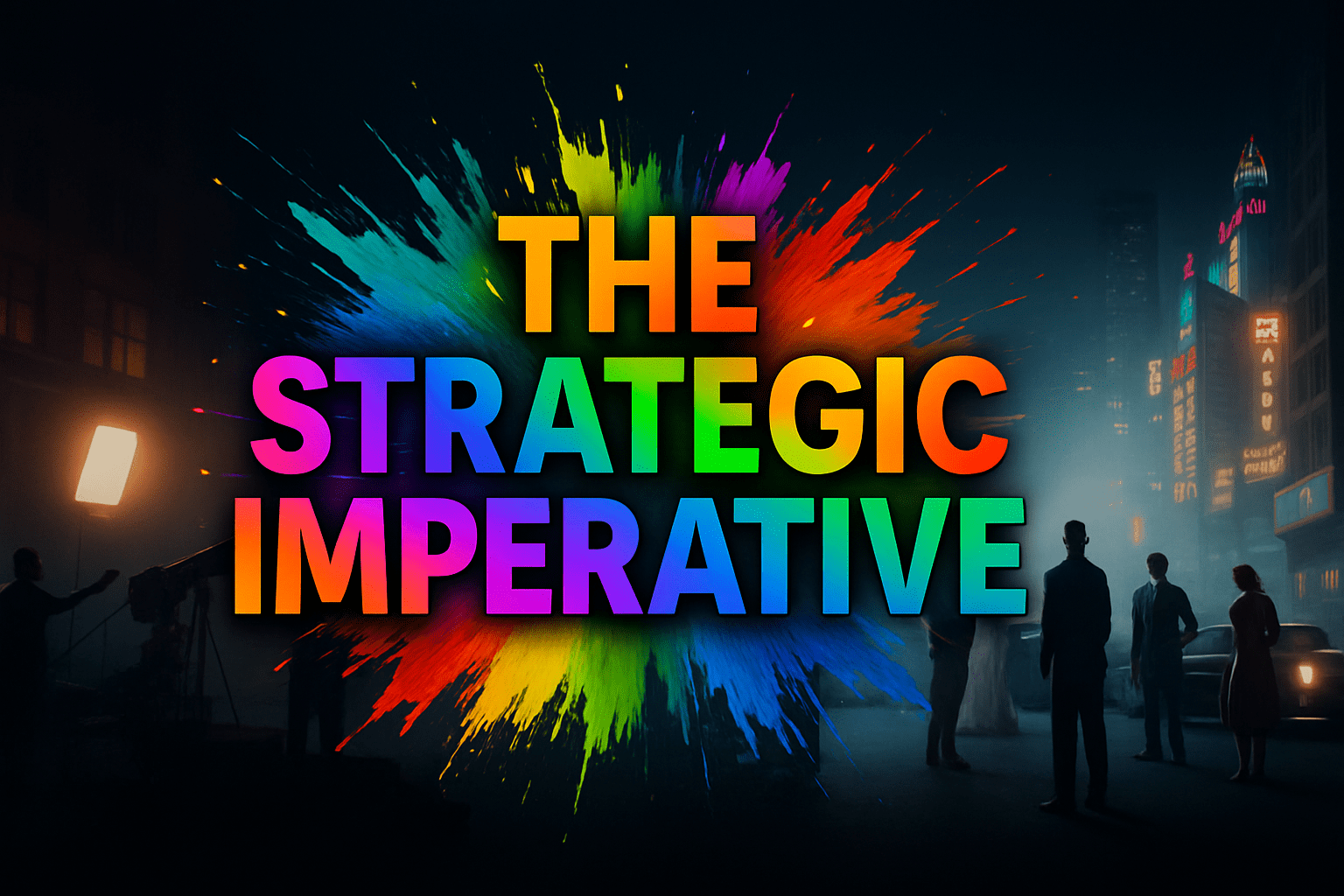The Strategic Imperative: Mastering Animation Studio Partnerships and Collaboration Services for Global IP

Introduction
The animation sector has transcended its designation as a niche vertical to become a central driver of high-value global intellectual property (IP).
For executives in content acquisition, production finance, and distribution, success is now defined not merely by creative vision but by the efficacy of securing strategic animation, studio partnerships, and collaboration services.
The modern content economy, fueled by the demand for premium, high-volume animated content across streaming platforms, demands an executive-level approach to partnership identification, qualification, and management.
Relying on traditional market scouting or fragmented, unverified data is no longer a viable option; the financial stakes and competitive velocity require a system of algorithmic precision.
Table of content
- The Strategic Imperative: Why Animation Studio Partnerships Define Global IP
- The Core Challenge: Vetting Partners in a Visibility Vacuum
- Strategic Framework for Secure Animation Collaboration Services
- How Vitrina Catalyzes Robust Animation Studio Partnerships
- Conclusion: Advancing Your Global IP Strategy
- Frequently Asked Questions
Key Takeaways
| Core Challenge | Vetting global animation studios and service providers is hampered by fragmented data on credentials, deal track records, and operational capacity. |
| Strategic Solution | Implement a data-driven framework for due diligence that elevates partnership scouting from an art form to a verifiable, repeatable science. |
| Vitrina’s Role | Vitrina provides the centralized, verified intelligence and project-level visibility required to identify, qualify, and secure the most suitable global collaboration partners. |
The Strategic Imperative: Why Animation Studio Partnerships Define Global IP
The complexity of creating animated content—a process that is non-linear, resource-intensive, and globally distributed—has made external partnership a necessity, not a choice.
A top-tier animated series can involve simultaneous work across storyboarding in Los Angeles, 3D modeling in Paris, rigging in Seoul, and rendering in Vancouver.
This operational reality means that a studio’s competitive edge hinges entirely on its ability to orchestrate highly effective cross-border animation, studio partnerships, and collaboration services. These arrangements are the conduits through which creative IP is physically realized and scaled.
The Fragmented Global Supply Chain
The global animation supply chain is characterized by fragmentation. It is a vast, intricate ecosystem featuring everything from boutique design houses specializing in concept art to large-scale VFX and post-production facilities that handle final rendering and compositing.
Executives must navigate these layers to find partners whose technical capacity, creative portfolio, and commercial track record align perfectly with their project’s mandate.
The sheer volume and geographic dispersion of these potential partners, many of whom are non-obvious players emerging from new markets, represent a significant data challenge.
It’s no longer enough to know the established players; competitive advantage is found in discovering the verified, rising talent that offers a unique value proposition, often at a lower cost base.
The Economics of Co-Production and Co-Financing
Beyond pure service provision, the strategic value of animation, studio partnerships, and collaboration services frequently centers on co-production and co-financing models.
These structures allow a financier or distributor to mitigate risk, share the substantial financial burden of major IP, and often gain automatic access to tax incentives or local market funding, such as the various national and regional funding programs available globally.
Successful co-production agreements—which must be negotiated meticulously to cover IP ownership, distribution rights, and revenue splits—demand absolute clarity regarding a partner’s proven deal-making history.
A major challenge in these agreements is the lack of transparent, verifiable data on a partner’s past co-financing deal flow and adherence to timelines.
The Core Challenge: Vetting Partners in a Visibility Vacuum
The primary risk in securing the necessary animation, studio partnerships, and collaboration services is the “visibility vacuum.
” For a $50M animated feature, a studio must confirm that their co-production partner or key service vendor has the:
1) Credential Track Record (verified, cited work on similar-scale projects);
2) Operational Capacity (current project load and physical infrastructure); and
3) Financial Stability (ability to meet payroll and resource requirements for the project duration).
The data required to confirm these three vectors is scattered across multiple jurisdictions, often locked behind regional barriers, and presented through unverifiable self-promotional materials.
Mitigating Risk: Credentials, Capacity, and Financial Due Diligence
For a content executive, due diligence cannot be a superficial process of checking IMDB or a company website. It must involve deep-dive scrutiny.
For example, a studio claiming expertise in virtual production must have verifiable credits attached to specific projects, documented by a neutral, third-party source.
The operational reality of a vendor—their capacity—is a volatile variable; a high-profile studio might be excellent but already overcommitted for the next 18 months.
Without a tool that tracks real-time project flow—who is working on what, with whom, and in what stage of production—this risk is impossible to quantify. The consequence of poor vetting is a project delay, cost overrun, and, ultimately, damage to the core IP value.
Overcoming the Data Deficit
The current market is plagued by a reliance on anecdotal recommendations, trade show floor conversations, and outdated professional databases. This creates a data deficit that favors the incumbent, less competitive players while obscuring the verified, emerging studios in high-growth regions like Latin America or Asia.
Strategists need an aggregated, standardized view of the entire global supply chain—a single source of truth that links a company not just to its name, but to its entire portfolio of projects, its key decision-makers, its confirmed collaborators, and its specific service capabilities (e.g., character design, motion capture, sound mixing).
This shift moves the executive from an inefficient, reactive scouting process to a proactive, algorithmic sourcing strategy.
Strategic Framework for Secure Animation Collaboration Services
Achieving a sustainable flow of high-quality animated content requires a formal, repeatable strategic framework for engaging in animation, studio partnerships, and collaboration services. This framework eliminates bias and ensures that every partnership decision is grounded in objective data and a clear alignment of capabilities and commercial objectives.
Step 1: Defining the Strategic Mandate and Scope
Before approaching any potential partner, the executive team must define the project’s strategic mandate. Is the primary goal cost reduction, accessing regional IP or talent, securing co-financing, or achieving a highly specialized technical aesthetic (e.g., stylized 2D/3D hybrid)?
This decision dictates the entire search profile. For instance, a mandate for cost-efficient, high-volume episodic work will require vetting large-scale, distributed service houses, while a mandate for securing European co-financing requires searching for established co-production entities with proven success in securing regional subsidies.
Step 2: Algorithmic Discovery and Vetting
The most critical step is the replacement of manual scouting with an algorithmic, data-driven approach. This involves leveraging a centralized intelligence platform—like Vitrina—to query the global supply chain based on the defined mandate.
The search must move beyond simple studio names to include: verified project credits, cross-referenced team member expertise, and detailed collaboration history (e.g., Company X has completed three co-productions with Streamer Y, two of which were animated, indicating a strong working relationship and proven capability).
For executives looking for partners in specific regions, the ability to rapidly identify high-performing animation co-production partners in Latin America is a significant competitive advantage.
How Vitrina Catalyzes Robust Animation Studio Partnerships
Vitrina is the strategic intelligence layer designed to eliminate the visibility vacuum in the M&E supply chain, making the procurement of animation, studio partnerships, and collaboration services systematic and secure.
We operate as the global leader in tracking the entertainment supply chain, ensuring executives have the verified, real-time data necessary for high-stakes decisions.
Vitrina is designed to solve the pain points that executive professionals face, such as the difficulty in sourcing pre-vetted vendors or studios in specific markets and the high resource cost of building business pipelines manually.
Unlocking Global Visibility
Vitrina’s core value proposition is the centralization of project tracking and company profiling. We track projects globally from development through post-release, tagging over 120,000 film and TV projects and over 350,000 companies.
This gives executives a holistic, single-screen view of the entire global animation ecosystem, far surpassing what is available through fragmented public sources.
Our platform enables a search for “animation studio with expertise in Unreal Engine and co-production history with Streamer X in the last 24 months,” delivering a list of qualified, verified partners in seconds, rather than months of manual research.
Due Diligence and Credential Verification
For securing robust animation, studio partnerships, and collaboration services, Vitrina delivers verifiable credentials at the company and executive level.
We link every project credit, every collaboration, and every service specialization back to a specific entity or person. This allows an executive to assess not just who a studio has worked with, but the full commercial context of that collaboration—its scale, genre, and successful completion.
By providing daily data updates and verified contacts for millions of industry professionals, we turn the due diligence process into a low-friction, high-confidence exercise, mitigating the risk of partnering with under-qualified or over-committed vendors.
This data-driven confidence ensures that the business pipeline built by the executive is robust and ready for the next stage of engagement.
Conclusion: Advancing Your Global IP Strategy
The future of global IP creation is inextricably linked to the successful orchestration of animation, studio partnerships, and collaboration services.
The challenges of fragmentation, risk mitigation, and data opacity are no longer merely administrative hurdles; they are fundamental threats to a project’s timeline and budget.
The strategic solution is the integration of algorithmic intelligence into the core partnership discovery process. By embracing platforms like Vitrina, executives can transition from reactive, manual scouting to a proactive, data-validated sourcing model.
This precision ensures that capital is deployed against the highest-value, lowest-risk partners, securing the integrity and profitability of the next generation of global animated IP.
Frequently Asked Questions
The main types of partnerships include co-productions (where costs, creative control, and ownership are shared), co-financing deals (primarily financial investment), and service agreements (where one studio is hired to perform specific tasks like rigging, compositing, or post-production for another).
The supply chain has become highly decentralized, with a massive increase in demand driving the emergence of qualified studios and specialist vendors across Asia, Latin America, and Eastern Europe, moving beyond traditional centers like the US and Japan.
The biggest risks include IP protection and ownership disputes, regulatory and tax compliance across different jurisdictions, and production delays stemming from misaligned capacity or unverified vendor credentials.
A co-production agreement is a legally binding contract between two or more production entities, often from different countries, that outlines the sharing of financial investment, creative decision-making, production labor, and eventual distribution rights for a film or series.

























